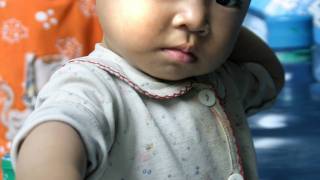What’s the Difference Between Shingles and Chickenpox Vaccines?

For most of our medical history, there was no reason to think chickenpox and shingles were related, because the symptoms looked so different.
It was not until the 20th century that researchers connected the two rashes were in fact caused by the same virus.
The two diseases may arise from the same varicella zoster virus, but the immune systems of seniors and children are different, according to the Centers for Disease Control and Prevention (CDC).
In some people who have had chickenpox, the virus can become active again later in life and cause shingles.
You can't catch shingles from someone else.
However, you can catch chickenpox from someone with shingles, if you haven't had chickenpox before.
When Chickenpox strikes small children, it manifests as red bumps on the body.
Shingles, on the other hand, usually affects adults.
Shingles’s rashes often appear as a red stripe across one side of the upper body.
Shingles, which is also called herpes zoster, occurs when the chickenpox virus (varicella zoster), reawakens later in those who've had the virus.
Almost all adults age 40+ carry the chickenpox virus.
Moreover, the older we get, the more the risk of getting shingles increases.
The CDC says shingles strikes about 1 million people in the U.S. each year and nearly one in three adults will experience a shingles outbreak in their lifetime.
Recently, the Food and Drug Administration approved Shingrix, a new shingles vaccine that contains a lone protein isolated from the shell of the varicella zoster virus.
This protein acts as an ID tag, enabling the immune system to recognize all future varicella zoster viruses it encounters.
The existing chickenpox vaccine, Zostavax, contains a whole, live virus, but weakened varicella zoster virus.
But live viruses, even weakened in a vaccine, can pose problems for people whose immune systems are weak due to age or disease.
“It’s (Shingrix) a real paradigm shift because there are no vaccines that perform so extraordinarily well for people in their 70s and their 80s,” says Rafael Harpaz, an infectious-disease specialist at the Centers for Disease Control and Prevention.
Conversely, the Zostavax, the traditional chickenpox vaccine, offers protection against shingles by only 51 percent, and the risk of PHN by 67 percent, according to the CDC.
In addition, Zostavax’s effectiveness appears to last just five years, according to the CDC.
Like every vaccine, Shingrix has the potential for side effects.
The new shingles vaccine does appear more likely to cause pain during injection and at the site of injection for up to three days afterward, more than Zostavax does, said the CDC.
The Shingrix vaccine offers 97 percent protection in people in their 50s and roughly 91 percent protection in for 70+.
And Shingrix appeared to retain similarly high effectiveness throughout a four-year study period.
Most pharmacies offer Zostavax today. The retail price of this vaccine varies based upon insurance coverage and location.
Vaccine discounts can be found here.
Our Trust Standards: Medical Advisory Committee
- Varicella (Chickenpox) and Herpes Zoster (Shingles): Overview of VZV Disease and Vaccination for Healthcare Professionals
- About Shingles (Herpes Zoster)
- Recommendations of the Advisory Committee on Immunization Practices (ACIP)
- Shingrix approved in the US for prevention of shingles in adults aged 50 and over

























